Eimmart: The Trojan fleet burns
Annotations
Aeneas hurries forward, the Trojan women having set fire to the ships; Iris is in the clouds in front of a rainbow with a torch in her hand.
Aeneas eilt herbei, als die trojanischen Frauen Feuer an die Schiffe gelegt haben; in den Wolken vor einem Regenbogen Iris mit einer Fackel in der Hand. (Suerbaum)
Engraving from a German children’s picture-book version of the Aeneid by G. J. Lang and G. C. Eimmart, “A tapestry of Roman virtues as seen in Vergil’s Aeneas and his brave deeds, rendered in sparkling engravings, as illustrations of the remarkable deeds of antiquity, for the common benefit of noble youth,” (Peplus virtutum Romanarum in Aenea Virgiliano eiusque rebus fortiter gestis, ad maiorem antiquitatis et rerum lucem, communi iuventutis sacratae bono, aere renitens) (Nuremburg: J.L. Buggel, 1688), pl. 20.

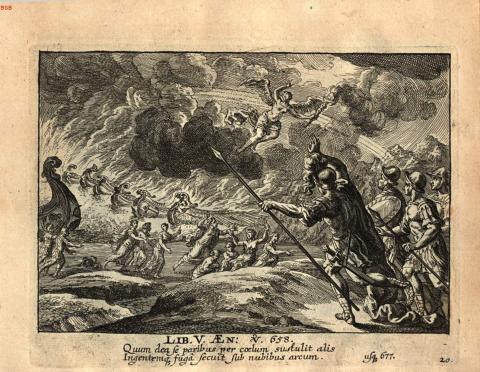
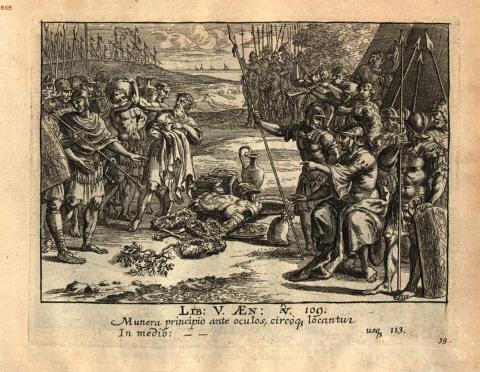
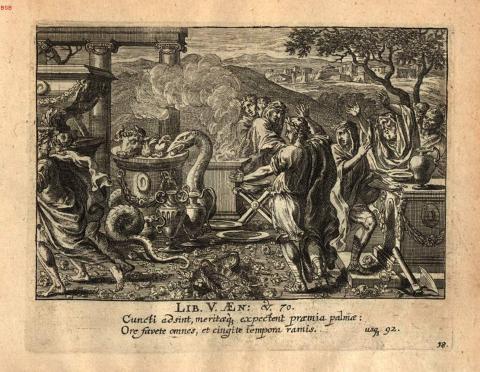
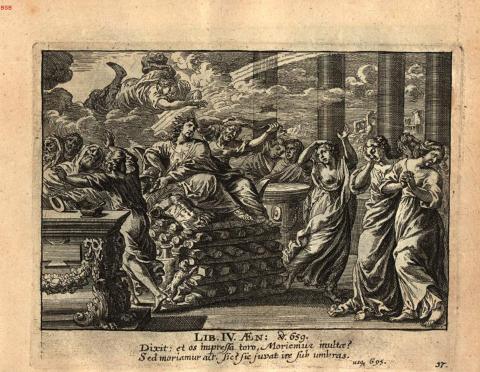
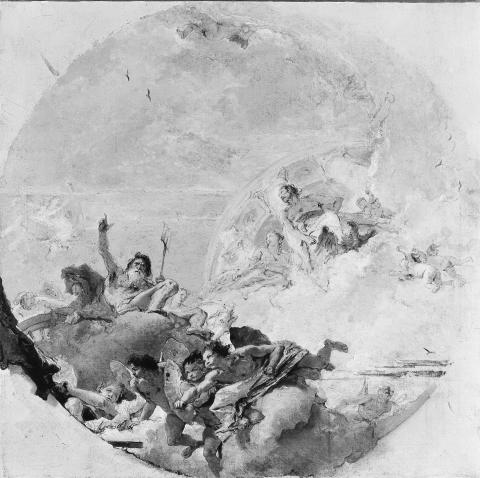
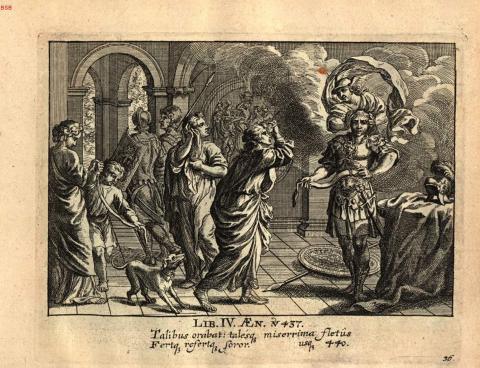
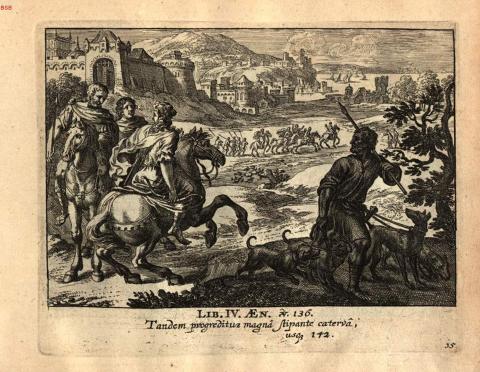
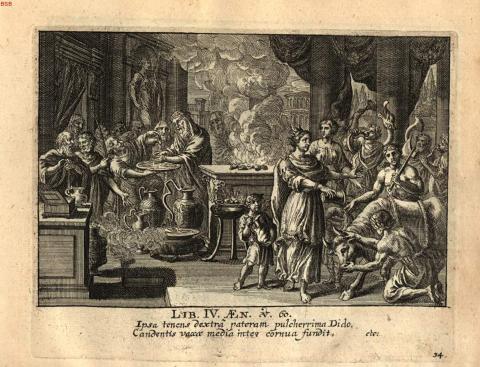
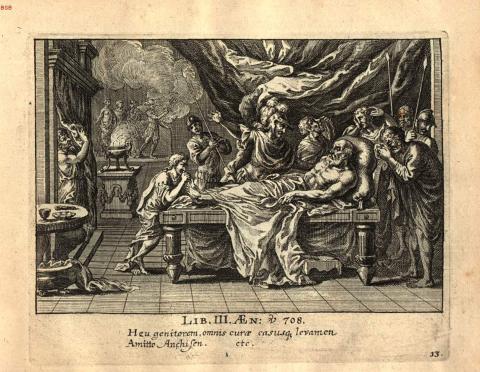

Iris, having incited the Trojan women to burn the ships, holds a burning torch and flies away in front of her telltale rainbow (657-658). Aeneas, wearing a long cloak, rushes forward towards his ships, which are all blazing. (Lucy McInerney)